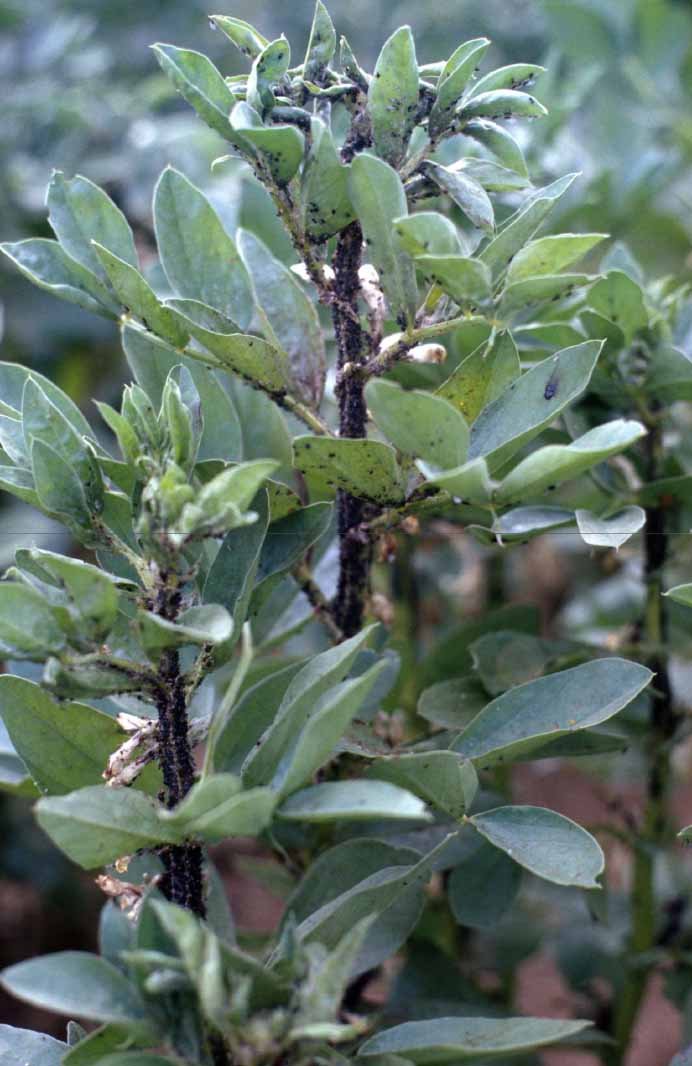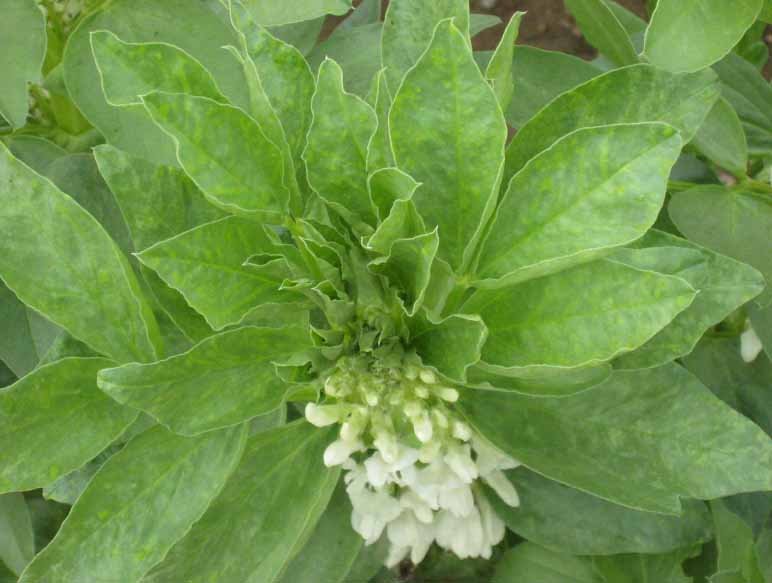 Full
FullGuide »

January 2025
Black bean aphid
Dense colonies of black aphids can develop at any time on the upper part of faba bean stems from the onset of flowering. The colonies can consist of hundreds of aphids which gradually extend downwards onto the leaves and developing pods. At first, individual plants may be infested and later the aphids spread into localised patches of infested crop.
DAMAGE
Damage to bean crops occurs mainly as the direct effect of aphids feeding. Plants fail to develop, and pods do not fill normally. The honeydew produced during feeding attracts secondary moulds as well as Botrytis spp. which cause chocolate spot. In addition, black bean aphids transmit viruses such as bean leaf roll virus.
DESCRIPTION AND LIFE CYCLE
Individual aphids are black, 1-2 mm in size, with very small white spots on the upper surface of the body. Winged aphids migrate to beans in early summer from their overwintering hosts, which include the spindle bush (Euonymus europaeus). Each adult is viviparous and can produce several wingless nymphs each day. Colonies develop rapidly, particularly in warm, humid conditions.
VIRUSES
Bean leaf roll virus (BLRV)
BLRV is aphid-transmitted and both the black bean aphid and pea aphid are vectors. Infection is usually more obvious where aphids infest the crop before flowering. Control of early invading aphids is essential to prevent virus infection.

Pea enation mosaic virus (PEMV)
The upper leaves of the plants may become pointed and crinkled. Vein clearing can develop, and translucent spotting may appear. Individual plants or small groups of plants can show symptoms from late flowering onwards. Pea aphids are the most common vectors. Control of aphids at early flowering is likely to prevent serious infection with PEMV.
Bean yellow mosaic virus (BYMV)
BYMV develops in beans at any time before flowering. Leaves are crinkled and may become pointed. Veinclearing can develop, and the plant is slightly stunted. It is similar to PEMV but without the translucent spotting and streaking on the leaf surface. The virus is aphid transmitted and common in field beans. Infection maybe on individual plants or groups of plants and,depending on severity, yield can be severely reduced. Pea aphid is the principal vector, although black beanaphid can also transmit the virus. Early control of aphids in flowering bean crops is the most effective means of preventing virus infection.

CONTROL IN THE FIELD
Black bean aphids are relatively easy to control using aphicide sprays, but because the beans are often flowering, the choice of aphicides is limited to those which will not harm pollinating insects. Colonies first develop on headlands, but where a general infestation of 10% of plants are colonised, spraying should be carried out as soon as possible. Applications made at early flowering or when 5% of plants are infested reduce infections of aphid-transmitted viruses. The Rothamsted Insect Survey (https://insectsurvey.com/aphid-bulletin) providesinformation about aphid flights throughout the season and is a useful tool to help predict activity in crops.